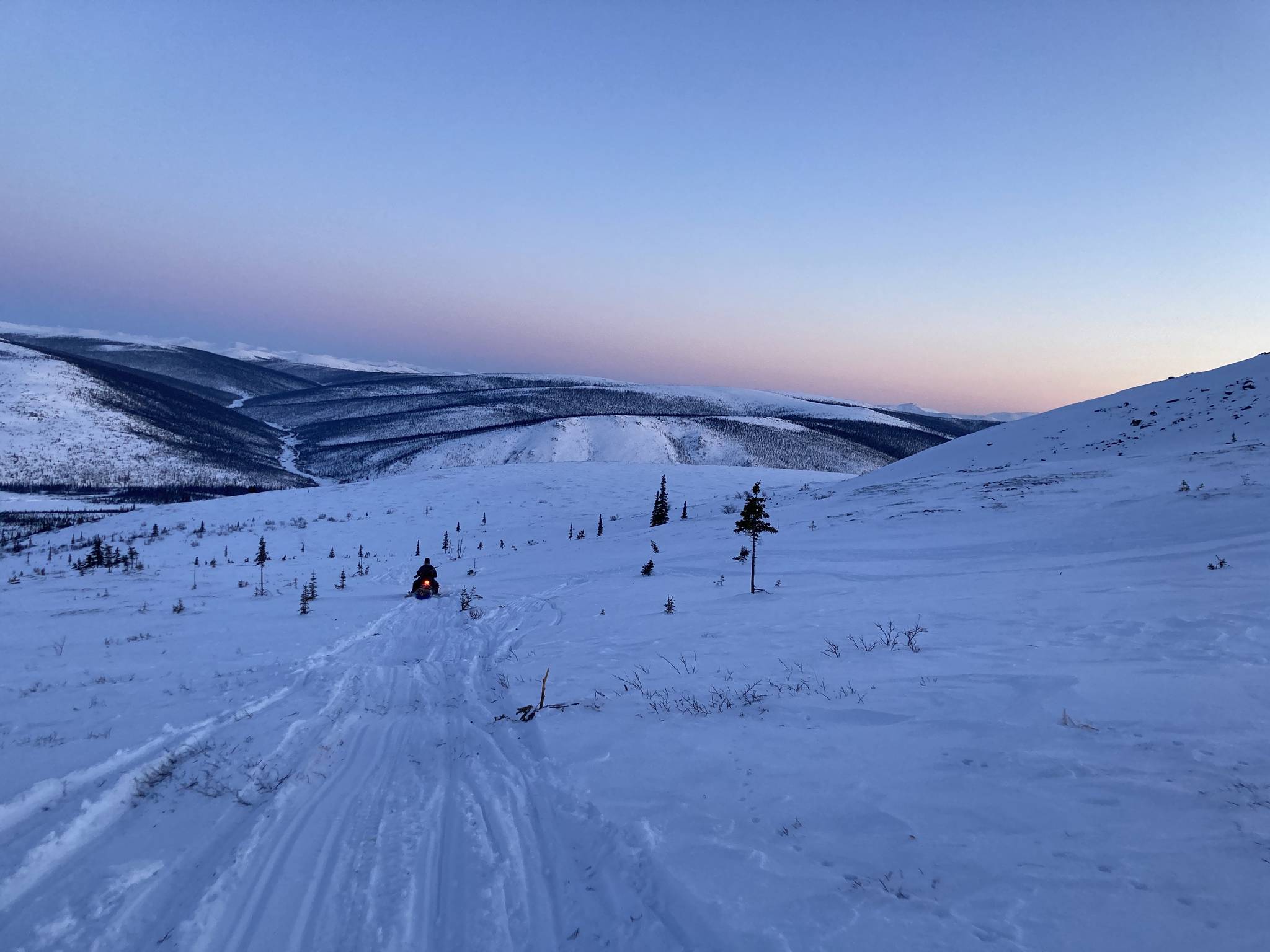By Jeff Lund
All that separated me from the cold was a long-sleeve, moisture-wicking shirt. And a wool long sleeve. And a fleece hoodie. And a puffy jacket. And a rain jacket. I had on a pair of bibs with reinforced knees and under them was a similar system of base, insulation and outer layers.
It sounds like a lot, but it really wasn’t.
I worried about exposed skin. I worried that my hands, which were starting to sweat thanks to the warmers on the snow machine, would freeze once I took my gloves off to chamber a round and point my rifle. I had been cold before, but not this type of cold. My brand of hunting cold is the 37-degrees and rainy variety, where you keep walking to get warm and are never too far from a truck. Thirty degrees below zero was new to me, but I wanted to see how spring break was done in interior Alaska, and I was getting an authentic look.
We had broken trail through a saddle between two windswept knobs where the snow was at least three to five feet deep. There was no hiking through that. We’d flail at best. It had never been more important that I kept tabs on my warmth and my skis on the path my buddy, Harrison, was carving with his snow machine. He’s the Fairbanks resident. He knows this program.
“My hands will be alright, right?”
“Oh yeah. Just make sure you don’t sweat.”
[10,000 hours doesn’t always make for an expert]
Given a choice between 30 below or 30 above for this caribou hunt, warmer would have been the obvious preference. But standing on that bluff, overlooking an absolutely stunning expanse of barren, winter-encased land, I was happy I was getting the full experience. And that I was managing to stay warm.
As is the case with all species after the dramatic increase of human contact and development, the history of the caribou herd we hunted is one of boom and bust. According to the Department of Fish and Game, the population dipped below 10,000 in the ’70s, but only gradually recovered thanks to low calf survival. In the mid-1990s, specific action was taken to manage wolf predation which, in conjunction with hunting management, helped the population recover more rapidly.
The herd has expanded and is creeping east toward its ancient range and is estimated to be over 80,000. However, the close proximity to the highway in conjunction with increased hunting pressure in late summer, has degraded the rolling habitat. By opening a 5,000-animal quota hunt in the winter, the ground would not be devastated by roaming off-road vehicles like in the summer and fall and the herd would be reduced to a level that the habitat could support.
I booked my tickets in January and bought a pair of snow boots.
We covered close to 60 miles on the machines at four different pullouts. Each spot we encountered other hunters off-loading their snow machines and we shared notes. I had never been in a more helpful hunting environment. In the end, we were on our way back to Fairbanks after seeing nothing when we saw four trucks and a few sleds with caribou. We pulled up next to the guy. He asked if we had a coffee percolator. We didn’t, but we had a pot.
“That’ll work. There are about 400, three miles that way.”
Two hours later, in the fading light we returned to the truck with our caribou and the man was still there with friends.
“We weren’t going to leave until you guys got back. It’s cold out there.”
“Yes. Yes, it was.”
• Jeff Lund is a freelance writer in Ketchikan. The Kindle version of his book, “A Miserable Paradise: Life in Southeast Alaska,” is available for pre-order on Amazon. His column “I Went To The Woods,” appears twice per month in the Juneau Empire.

